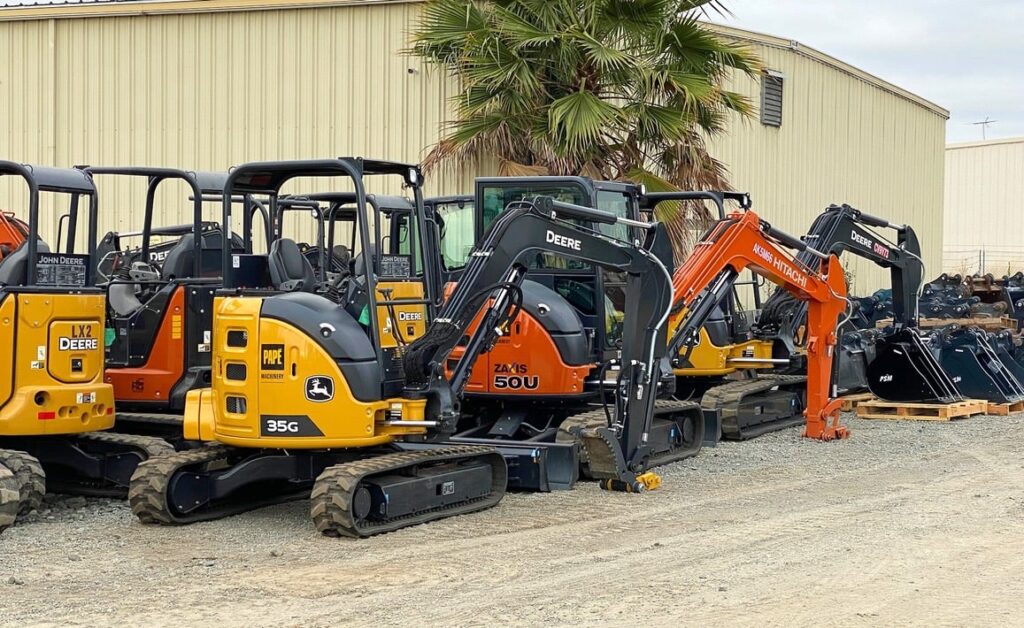Do you rent a compact excavator? Are you looking to keep it safe and efficient during work? If so, this guide is for you!
Here, you’ll learn about pre-operation inspections. Discover the critical safety and performance components. Find out how to make the most of regular maintenance checks. Plus, understand fault diagnosis measures to safeguard your rental equipment.
Introduction
This article is all about inspecting compact excavators for long-term safety. The key points are:
- The introduction is essential for optimal performance.
- Regularly check all parts: tracks, undercarriage, engine, control systems, and hydraulics to identify and sort out problems.
- Do pre-operation checks before every use.
- Safety always comes first.
- Keep records of inspections and repairs.
The Importance of Regular Compact Excavator Inspections
Regular inspections are crucial for the safety and durability of compact excavators. Maintenance is a must to keep them running smoothly and reduce downtime. Spot problems early on to avoid costly repairs. These assessments are essential for efficient performance, helping identify potential issues before they worsen.
Checks should include the following:
- wear and tear in undercarriage parts
- hydraulic fluid levels and leaks
- engine oil
- air filters
- electrical wiring
Issues found during the examination must be addressed quickly to prevent accidents causing injuries. Reports guide repair techs, providing data about the condition of the machines.
Training operators is also essential. It can prevent machine breakdowns due to mishandling or carelessness by untrained staff. Regular inspections plus knowledgeable operators will reduce equipment failures.
Key Components for Compact Excavator Inspections
Inspecting the critical parts of a compact excavator regularly is vital to ensure operational safety. Check for defects or damage due to regular wear, environment, or rough handling.
Below is a table of crucial elements to inspect in a compact excavator:
| Components | Description |
|---|---|
| Undercarriage | Tracks, rollers, idlers, sprockets, hydraulic lines |
| Hydraulic System | Hoses, fittings, pumps, oil filters, reservoirs, controls, cylinders |
| Engine | Battery, air, fuel filters, belts, hoses, pumps, wiring harnesses |
| Cab & Controls | Windows/doors seals, seatbelt mounting points, emergency cut-off switches |
| Attachments & Pins | Attachment locking mechanisms, pins/bushings |
Read operator manuals for guidelines on maintenance. Regular inspections help minimize repairs, downtime, and money spent. They also identify potential hazards early and keep operators safe.
Safety Checks
Compact excavator inspections for safety are a must. Carelessness causes accidents and can damage the machine. Here’s what to do before starting up:
- Check the fuel and hydraulic oil levels.
- Test all safety features, e.g., seat belt, ROPS, FOPS (if installed). Make sure they are functioning.
- Look for leaks, dents or abrasions in the hydraulic lines.
- Look for wear, cracks or missing parts in the undercarriage components, like rollers, idlers and sprockets.
- Ensure that the area around the machine is clear of people not essential for the job.
Remember, you must wear personal protective equipment, such as a helmet, earplugs (when noisy), and gloves. Read the operator manual before operating the excavator so you know how to maintain safety.
Pre-startup checks will give you peace of mind that your excavator is safe. Everyone’s goal is to avoid accidents on a construction site. Don’t take chances – ensure your excavator isn’t just an oversized paperweight with trust issues!
Operational Checks
Compact excavators rely on their vital parts for regular operation. Therefore, operational tests must be done to identify malfunctions before they become serious. Also, operators should regularly check fuel filters, oil levels, battery life, and tire condition. These inspections help the machine last longer and avoid costly repairs.
Perform the following functionality tests as a part of compact excavator inspections:
- Inspect Hydraulic Systems
- Check Electrical System
- Evaluate Engine Health
- Examine Cooling System
- Review Track and Undercarriage for wear.
It’s essential to keep your compact excavator in great shape by performing regular functionality tests. This way, operators can ensure their equipment runs optimally and safely. Maintenance for your compact excavator is not fun, but preventing painful and costly consequences is necessary.
Compact Excavator Inspections & Maintenance Schedule
A maintenance schedule must be followed to keep Compact Excavator functioning safely and for a long time. Inspections, cleaning and repairs must be done to ensure all components are in good condition.
Below is a table with essential Compact Excavator Inspections & maintenance tasks that should be done daily, weekly, monthly or yearly. This includes checking fuel and hydraulic oil levels, inspecting filters and belts, replacing worn parts and lubricating essential components.
| Maintenance Task | Frequency |
|---|---|
| Check Fuel and Hydraulic Oil Levels | Daily |
| Inspect Filters | Weekly |
| Inspect Belts | Weekly |
| Replace Worn Parts | Monthly |
| Lubricate Important Components | Yearly |
Following the Compact Excavator Inspections & maintenance schedule can save you money on downtime, stop major repairs or breakdowns and help the excavator work at its best for a long time.
Renting With Laine Equipment
Before delivering the equipment, we ensure that all equipment is in good condition. We also provide you maintenance schedule so you get the best from our equipment.
Why do you need to rent from Laine equipment? Just call us, and we will tell you why only us.


